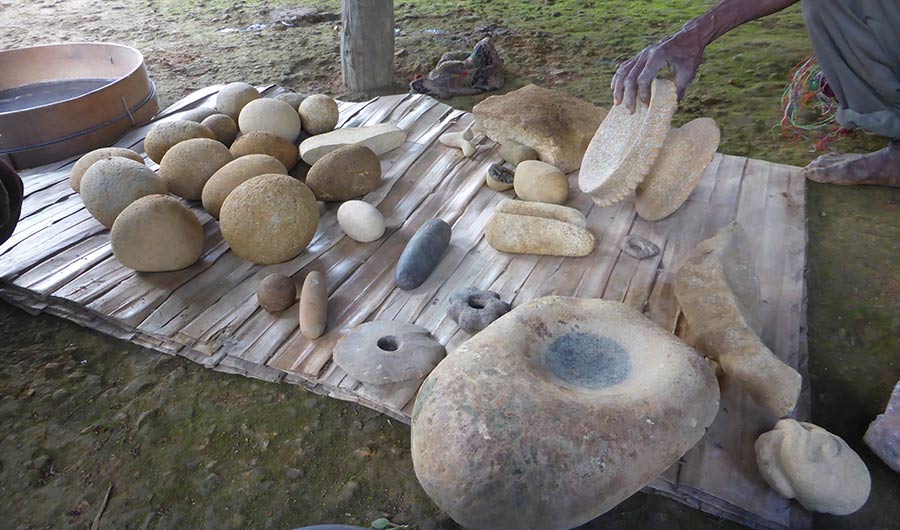Archaeological Findings Suggest New Guinea Began Neolithic Period Independently

Artifacts found by Waim residents.
Image credits: Ben Shaw
(Inside Science) -- Prehistoric artifacts unearthed in the highlands of New Guinea suggest the people living there may have independently developed many of the same revolutionary innovations seen elsewhere on Earth when farming emerged.
The advent of agriculture paved the way for more complex societies and more advanced technologies across the globe, marking the start of the Neolithic Period of the Stone Age about 11,500 years ago.
Although previous research found wetland farming of root and fruit crops originated in the New Guinea highlands at least 7,000 years ago and perhaps as early as 10,000 years ago, there was little evidence of the kinds of social changes that accompanied the Neolithic elsewhere in the world. Until now, the earliest signs of the Neolithic in New Guinea were linked with migrants known as the Lapita culture, who arrived from Southeast Asia 3,200 years ago.
Researchers, invited by villagers who found buried stone artifacts in the highlands in 2016, investigated the archaeological site of Waim, about 50 kilometers north of Kuk Swamp, where the earliest traces of agriculture on the island were previously discovered.
The newfound artifacts include a complete stone carving of a human head with a bird perched on top and a fragment of a stone carving depicting the brow ridge of a human or animal face, as well as two ground stone pestle fragments with traces of yam, fruit and nut starches on their surfaces.
The researchers dated the charcoal found on and around artifacts excavated in the area to reveal that they were likely between 4,200 and 5,050 years old, making them the oldest such items found in the islands of Oceania.
The scientists also found a chunk of obsidian likely used as a source for sharp volcanic glass blades and points. Chemical analysis found it came from the island of New Britain more than 800 kilometers away, revealing the oldest evidence of long-distance obsidian trade to New Guinea. They also found possible evidence of several activities that would mark the emergence of Neolithic-style life -- fibercraft, fire-lighting tools and postholes from a possible village settlement.
This combination of symbolic art and complex technologies suggest the Neolithic emerged on New Guinea independent of outside influences. It may also challenge how researchers define the Neolithic, especially outside Eurasia, said study lead author Ben Shaw, an archaeologist at the University of New South Wales in Sydney, Australia. For example, a current specification, that Neolithic societies had pottery, may need to be adjusted due to local crops. In Eurasia, he said, "they cultivated wheats and rice, which needs to be boiled in a pot," Shaw said. "Tubers in New Guinea can be cooked straight on a fire."
The scientists detailed their findings online March 25 in the journal Science Advances.

